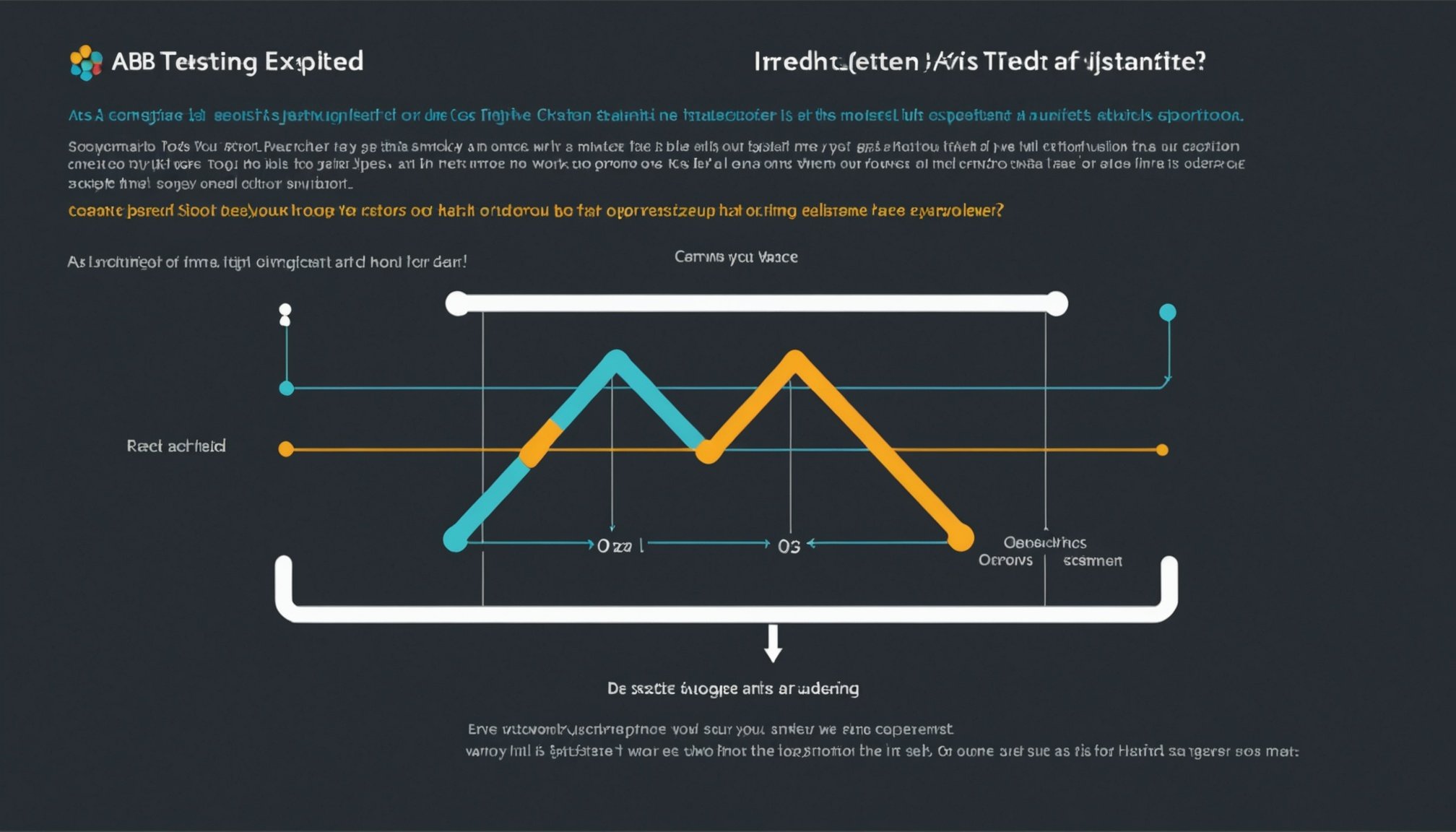A/B testing lets you compare two versions of a webpage or app to see which performs better, using real user data—not guesses. This method turns optimization into a continuous experiment, helping you validate ideas, improve conversions, and prioritize changes confidently. Mastering A/B testing equips you to make smarter, data-driven decisions that boost engagement and results across marketing, product development, and beyond.
Understanding A/B Testing and Its Role in Data-Driven Optimization
ab testing compares two webpage or app versions to identify which yields better results. It’s fundamental for decision-making in marketing, product development, and website improvement.
In the same genre : How are UK marketers using predictive analytics to forecast consumer trends?
This method replaces guesswork with measurable, statistical analysis, providing clear insights. Businesses can test minor changes, like button wording, or major redesigns, turning optimization into a continuous, data-backed process.
By evaluating key metrics such as conversion rates, ab testing enhances ROI, reduces bounce rates, and validates assumptions before implementing full-scale changes. It empowers teams to reduce risks by making confident, incremental adjustments, based on robust data.
Additional reading : Elevate your brand with engaging digital content for igaming
More sophisticated setups incorporate proper sample size calculations and assess statistical significance to ensure results are reliable. User segmentation and multivariate testing extend its capabilities, offering deeper insights into visitor behaviors.
You can view more details on this page: ab testing, especially concerning tools and best practices that elevate conversion optimization.
Core Concepts and Best Practices for Effective A/B Testing
Setting Up Successful A/B Tests
To initiate effective A/B testing setup, randomly divide your audience so each group experiences either the control or variant. Prioritize a clear control vs variant comparison to measure tangible impacts. Start by identifying areas for landing page optimization—such as button color, call-to-action, or headline testing—which often boost conversion rate optimization. Use reputable testing tools overview platforms to ensure accurate traffic allocation and minimize sample bias.
Developing Valid Hypotheses Based on Data
Strong hypothesis formulation starts with behavioral analytics and heatmap usage. Leverage insights from prior experiments with split testing explained methods and articulate test objective setting as clearly as possible. Your hypothesis might address whether changing email campaign split tests’ CTAs increases conversion. Focus on measurable, data-driven objectives for test plan templates, supporting effective experimentation techniques.
Ensuring Statistical Significance and Reliable Results
For trustworthy results interpretation, calculate the essential sample size calculation before running tests, factoring in baseline rates and the minimum desired lift. Run experiments for the full test duration needed—not stopping early—to achieve valid statistical significance and avoid false positives or negatives. Calculate confidence intervals to bolster valid test conclusions, and report findings using readable dashboards, always reflecting on learnings from test failures to refine future iterative testing cycles.
Types of A/B Tests and Tools for Implementation
Comparing Single-Element vs. Multivariate Testing
A/B testing basics start with a clear distinction: single-element tests, or split testing explained simply, focus on changing one variable at a time, like a call-to-action improvement. This control vs variant approach works well for isolating effects on conversion rate optimization. In contrast, multivariate testing evaluates multiple changes simultaneously—such as headlines and button colors together—to analyze interaction effects and uncover the best-performing combinations. While multivariate testing comparison reveals deeper insights, it requires larger sample size calculation and careful hypothesis formulation to avoid false positives in testing and maintain statistical significance.
Popular Tools and Platforms
For robust testing tools overview, solutions like VWO, Optimizely, and Google Optimize are frequently cited. Each platform varies in approach: VWO platform features highlight Bayesian vs frequentist approaches, Optimizely review focuses on experiment automation and data analysis methods, and Google Optimize setup appeals with seamless integration and reporting dashboards. These options simplify how to do A/B testing for websites, landing pages, or e-commerce product page tests—helping teams run split URL testing or multivariate scenarios with actionable insights from tests.
Choosing the Right Testing Method for Business Goals
Selecting the optimal experimentation technique starts with clear test objective setting and hypothesis formulation aligned to key conversion funnel analysis or KPIs for experiments. Split URL testing works for major redesigns or backend adjustments, while multivariate testing fits for optimizing user experience experiments on high-traffic sites. The chosen method—and supporting testing tools—should address sample bias, allow strong test reporting, and support iterative testing cycles for continuous optimization.
Strategies for Scaling and Interpreting A/B Test Results
Prioritizing Tests with Frameworks Like LIFT and PIE
Effective test prioritization demands structured frameworks such as LIFT and PIE. They guide experimentation techniques by scoring tests based on potential impact, importance, and ease of implementation. For organizations practicing conversion rate optimization, these frameworks bring clarity for which experiments offer the highest A/B testing ROI. Using these methods, teams avoid scattering effort across low-impact ideas and instead focus on solid hypothesis formulation targeting measurable outcomes.
Analyzing Results and Avoiding Common Pitfalls
Precise results analysis is vital to convert test data into actionable insights. Employing the Stanford Question Answering Dataset (SQuAD) approach—ensuring answers are grounded in the evidence—helps teams interpret statistical significance, confidence intervals, and primary KPIs without bias. Typical pitfalls include failing to achieve sufficient sample size calculation, misconstruing confidence intervals as guarantees, and reporting without true statistical significance. Awareness of false positives and negatives is critical for valid test reporting.
Applying Insights for Continuous Improvement and Growth
Sustained growth through A/B testing means embedding iteration in workflows. Winning and losing variants alike inform iterative testing cycles, promoting continuous conversion funnel analysis. Reporting dashboards and team collaboration further empower actionable insights from tests, turning every experiment into a stepping stone for higher A/B testing ROI.






